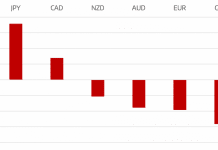In the recent years, Switzerland has come under international pressure to move away from its traditions of banking secrecy. The US has made inroads on the Exchange of Information front and Switzerland has declared a willingness to meet or even exceed OECD standards in this area.
In 2011 Switzerland announced a white money strategy, involving proposals that banks will obtain a declaration from their foreign clients confirming that their assets held in Switzerland are correctly taxed. As a complement, to ensure continued tax compliance Switzerland offers States a facility whereby Switzerland will impose a final withholding tax on interest earned on the deposits in question. Since September 2011, two bilateral agreements based on this idea (Rubik agreements) have been entered into force with the UK and Austria.
EU position on the withholding tax agreements
While Member States are free to enter into international agreements, be they bilateral or multilateral, such agreements must not include any aspects which overlap with areas in which common action by the European Union has been taken or is envisaged. In this particular case the agreements cover taxation of savings income received by Austrian and UK residents from Swiss payers and provide for mechanisms aimed at securing taxation of such income in accordance with the laws of the State of residence of the beneficial owner. Mechanisms with the same objective are already contained in the Savings Directive and the Agreement between the EU and Switzerland providing for measures equivalent to those in the Savings Directive.
According to Algirda Semeta Member States should refrain from negotiating, initialing, signing or ratifying agreements with Switzerland, or any other third state, insofar as any aspects regulated at EU level might be touched upon. In practical terms, this means:
- Concerning direct taxes and the future, any bilateral agreement should include a carve out of areas already covered by existing EU instruments and areas included in proposals for their modification. In broad terms, Member States are free to agree upon tax measures regarding all other forms of income and capital.
- Concerning the past, any regularization of unpaid taxes by formula may not concern VAT.
- If such an agreement provides for a broader cooperation, extending to areas outside tax, the principles on exclusive external competence of the EU apply in the same manner as described above, insofar as such areas are already governed or likely to be governed by EU harmonization. This may also concern banking and investment services.
EU Savings Directive
The 2003 Savings Directive was introduced as a European approach to attacking banking secrecy. It provides a mechanism whereby EU Member States automatically exchange information about interest earned in one Member State by a resident of another Member State. Currently, 25 Member States apply the automatic exchange of information. Two Member States – Austria and Luxemburg – are allowed, for a transitional period that ends in 2015, to apply a withholding tax instead of engaging in the automatic exchange of information. Currently, the rate of this withholding tax is 35%.
The EU savings agreements with Switzerland introduced equivalent measures, based around Switzerland paying agents withholding tax of 35% from certain interest payments to EU residents, with that tax being (mostly) transferred to the Member States of residence of the taxpayer and being (fully) available as a credit or repayment in that Member State upon full declaration of the income by the taxpayer. To avoid the withholding tax, the account holder has an option of disclosure to the Tax Administration of his Member State.
Since 2009, on the basis of a proposal presented by the Commission in November 2008, the EU has broadly agreed on enhancements that need to be made to strengthen the Savings Directive, mainly by extending its product scope, adding rules for identifying the owners of interest and dealing with artificial or tax exempt intermediary structures.
FATCA – Rubik – EU Savings Directive
To some extent the existing EU Savings Directive has elements of FATCA. The differences are that the EU Savings Directive has similar loopholes that the US QI regime has. For example, a person wanting to evade tax could invest in shell entities. Another difference is that although the EU Savings Directive is principally a reporting model, it allows a withholding model for certain countries (Austria and Luxemburg). FATCA as passed by the US doesnt allow withholding.
A withholding system is at best going to provide rough justice by approximating the amount of tax that is due. In addition, there are several technical issues with the withholding system adopted in the Rubik agreements. The biggest is that it doesnt prospectively apply a withholding tax on new money deposited in a Swiss account. History learns that the biggest tax dollars evaded are on the principal amounts deposited in a Swiss account. The Rubik agreements only address investment income prospectively. For example, if I were to deposit $10 million in a Swiss account and thereby avoided $3.5 million of US tax, that is a lot more substantial than the tax I avoid on the investment income on such accounts. This is especially the case in todays low yield world.
My opinion
I personally believe a reporting system (FATCA) is preferred since it better ensures that taxes are paid at the correct rate (i.e., it induces the taxpayer to file a tax return and declare any income). In addition, to the extent that other social welfare payments (e.g., social security or health care eligibility) are based upon income, a reporting system is better able to make sure the persons income is calculated correctly.
Dirk De Wolf is a writer and blogger from Aalst, Belgium. He has an BSc in Political Science and an MSc in EU-Studies from the University of Ghent. Dirk wrote his master






































